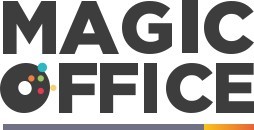
Understanding the Basics of Cost and Schedule Performance Metrics
Understanding cost and schedule performance metrics is crucial for project management professionals (PMP) aiming to enhance efficiency and deliver successful projects in the Arabian Emirate sector. These metrics offer an indispensable guide to assessing how well projects are meeting their planned budgets and timelines.What Are Cost and Schedule Performance Metrics?
Cost and schedule performance metrics, including the well-known Cost Performance Index (CPI) and Schedule Performance Index (SPI), are critical tools for monitoring project progress. These indices help project managers evaluate cost efficiency and time management by measuring how well allocated resources are utilized in comparison to the planned project budget and schedule.The Role of Cost Performance Index (CPI)
The Cost Performance Index is imperative in determining cost efficiency. Calculating CPI involves comparing the budgeted cost of work performed to the actual cost. A CPI value greater than one indicates that the project is cost-efficient, as it's being completed under budget. On the other hand, a value less than one signals cost overrun.Understanding Schedule Performance Index (SPI)
Similarly, the Schedule Performance Index measures time efficiency by comparing the earned value with the planned value. Essentially, the SPI helps project managers ascertain whether the project is ahead of or behind schedule. Understanding these performance indices allows for better decision-making and strategic planning. For further insights on how Arabian Emirate companies are optimizing these metrics for project enhancement, explore the importance of efficient tracking practices in streamlining project execution.The Importance of CPI and SPI in Arabian Emirate Companies
The Significance of Cost and Schedule Performance Metrics in the Emirates
In the competitive landscape of Arabian Emirate companies, project efficiency is paramount. Utilizing cost and schedule performance metrics, specifically the Cost Performance Index (CPI) and Schedule Performance Index (SPI), provides a measurable pathway to achieving this efficiency. Project management in the region is often marked by ambitious timelines and substantial investments. As such, CPI and SPI become crucial diagnostic tools.- CPI (Cost Performance Index): It helps assess how efficiently the budgeted resources are being used. By calculating the ratio of earned value to actual cost, companies can gain insights into whether they are under or over budget. This information is critical, especially considering the high stakes and complex projects typical of Arabian Emirate industries.
- SPI (Schedule Performance Index): This metric is instrumental in understanding the timeline efficiency. It provides a ratio of earned value to planned value, indicating whether the project is ahead or behind schedule. For organizations striving for precision, such timely insights are invaluable.
Calculating CPI and SPI: A Step-by-Step Guide
Mastering the Calculation of CPI and SPI
To optimally utilize cost and schedule performance metrics in project management, understanding how to accurately calculate the Cost Performance Index (CPI) and Schedule Performance Index (SPI) is crucial. These indices are instrumental in determining how efficiently a project is adhering to its predetermined budget and schedule.- Cost Performance Index (CPI): This metric provides insight into the cost efficiency of the work being accomplished. Calculating CPI involves dividing the earned actual (the value of work actually performed) by the actual cost (the amount spent to achieve the work performed). A CPI greater than 1 indicates that the project is under budget, whereas a CPI less than 1 signals overruns.
- Schedule Performance Index (SPI): Similarly, SPI assists in understanding schedule efficiency. It is calculated by dividing work earned planned by the budgeted cost of work scheduled. An SPI greater than 1 signifies project completion ahead of schedule, while an SPI less than 1 indicates delays.
Real-World Applications of CPI and SPI in the Emirates
Practical Use of Performance Metrics in Emirates
In the dynamic business environment of the Arabian Emirates, understanding and applying Cost Performance Index (CPI) and Schedule Performance Index (SPI) is crucial for project success. These metrics are not just theoretical concepts but are actively utilized to enhance project efficiency and ensure that projects are delivered within budget and on time.
Companies in the Emirates often deal with large-scale projects where the stakes are high. Here, the application of CPI and SPI becomes indispensable. By calculating the CPI, project managers can assess whether the project is within the budget by comparing the earned value to the actual cost. Similarly, SPI helps in determining if the project is on schedule by comparing the earned value to the planned value.
Case Studies: Successful Implementations
Several organizations in the Emirates have successfully implemented these performance metrics. For instance, in the construction sector, companies have used CPI to monitor cost variance and ensure that the project budget is adhered to. By continuously tracking the cost performance, they can make informed decisions about resource allocation and cost adjustments.
In the oil and gas industry, where project schedules are critical, SPI is often used to ensure that projects are ahead of schedule or at least on track. This is achieved by regularly assessing the schedule variance and making necessary adjustments to the project schedule. The ability to calculate and interpret these indices allows project managers to take corrective actions promptly, thereby avoiding potential delays.
Benefits and Challenges
While the benefits of using CPI and SPI are clear, there are challenges as well. Accurate data collection is essential for these metrics to be effective. Any discrepancies in the actual cost or work performed can lead to incorrect calculations, affecting the overall project management strategy.
Furthermore, the integration of these metrics into the existing project management framework requires training and a clear understanding of the underlying principles. However, when implemented correctly, these indices provide a powerful tool for enhancing project efficiency and ensuring successful project completion in the competitive environment of the Arabian Emirates.
Common Pitfalls and How to Avoid Them
Avoiding the Mishaps: Navigating Common Challenges with CPI and SPI
In the realm of project management, understanding the cost and schedule performance metrics is pivotal, but equally important is recognizing and steering clear of prevalent pitfalls. Companies in the Arabian Emirate, while striving for optimal project efficiency, often encounter several challenges when working with CPI (Cost Performance Index) and SPI (Schedule Performance Index). One common issue is a misinterpretation of the indices. For instance, when the CPI deviates significantly from 1.0, it can create confusion if not correctly contextualized. A CPI greater than 1.0 often suggests that the project is delivering worse than the budget planned, which might seem positive but requires scrutinizing the actual work performed versus planned. Conversely, a CPI less than 1.0 indicates that the project is overrunning the budget—this necessitates immediate remedial measures to mitigate cost overruns. Similarly, when working with the SPI, it's essential to understand that a value greater than 1.0 shows the project is ahead of the schedule, while below 1.0 means it lags. Misjudging these figures can lead to flawed management decisions. Consistently monitoring these indices allows teams to confirm whether modifications in the project schedule are required to align with the completion targets. Another factor contributing to missteps is neglecting continuous monitoring. Executives should ensure that both cost and schedule variances are regularly assessed. This ongoing evaluation helps in precisely calculating both actual costs versus budgeted costs and earned versus planned values, which are crucial in maintaining project efficiency. Embracing a detailed approach in calculating and interpreting CPI and SPI indices can significantly enhance decision-making. Failure to correctly interpret the data can lead to strategic errors, impacting the overall performance of the project. Therefore, the emphasis should always be on integrating these indices into a broader project management strategy that encourages proactive rather than reactive approaches. Ultimately, avoiding these pitfalls requires consistent training and updates on project management best practices. By fostering a culture of learning and adaptation, Arabian Emirate companies can not only optimize their project efficiency but also enhance their overall ability to manage resources proficiently. This ensures that projects are delivered on time, within budget, and with the expected quality, reinforcing the company's reliability and expertise in the competitive market.Future Trends in Project Management Metrics
Advancements in Performance Measurement Tools
As project management continues to evolve, so do the tools and metrics used to track and enhance project efficiency. Cost and schedule performance metrics, such as CPI and SPI, are integral to assessing a project's financial health and progress. But looking to the future, several trends suggest these performance measures will become even more sophisticated.- Integration of AI and Machine Learning:
- Advanced algorithms can analyze the extensive data produced by projects, predicting cost overruns and schedule delays before they occur.
- AI can dynamically calculate cost variance and schedule variance, offering real-time insights into performance.
- Increased Automation in Metric Analysis:
- Automated systems will reduce time spent on manual calculations, such as the index CPI and SPI.
- Automation helps in maintaining accurate updates on actual cost and earned values, enhancing the accuracy of project performance index.
- Enhanced User Interfaces for Data Visualization:
- With visual dashboards, project managers can track the performance level against the budgeted cost more effectively.
- Simplified displays bring complex data like planned work against actual work performed into clearer focus.
- Focus on Predictive Analytics:
- Utilizing trends from earned planned and earned actual data to forecast future project scenarios.
- Machine-learning models can predict when projects will complete, providing early insights to stay ahead schedule.
- Collaborative Platforms:
- Platforms promoting shared insights and collaborative decision-making will become crucial.
- Access to real-time updates on projects enhances team efficiency and minimizes delays.













